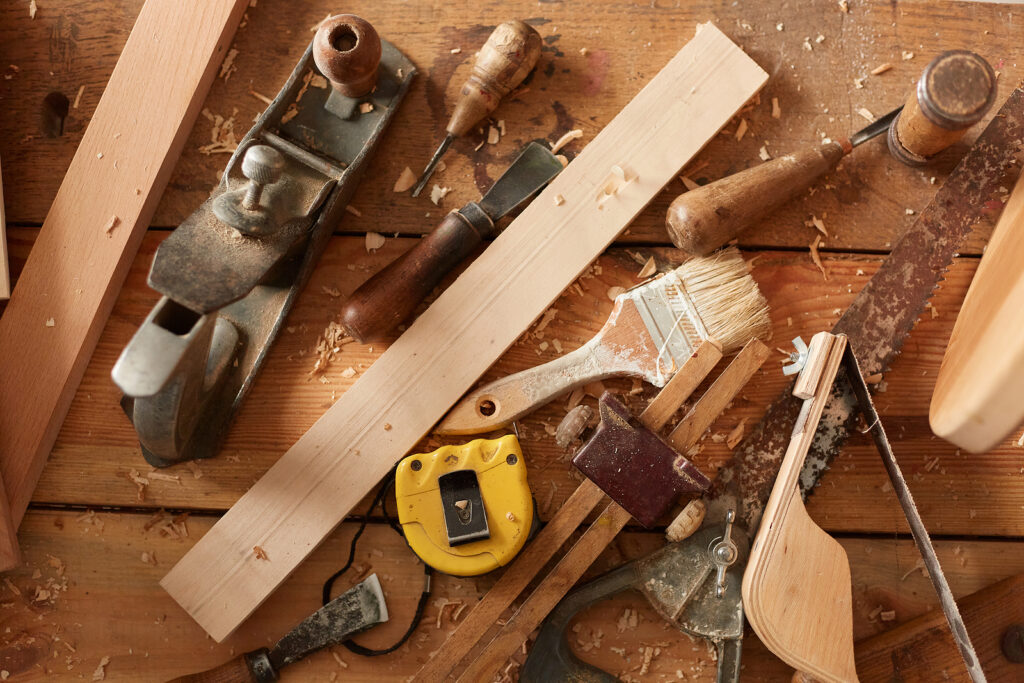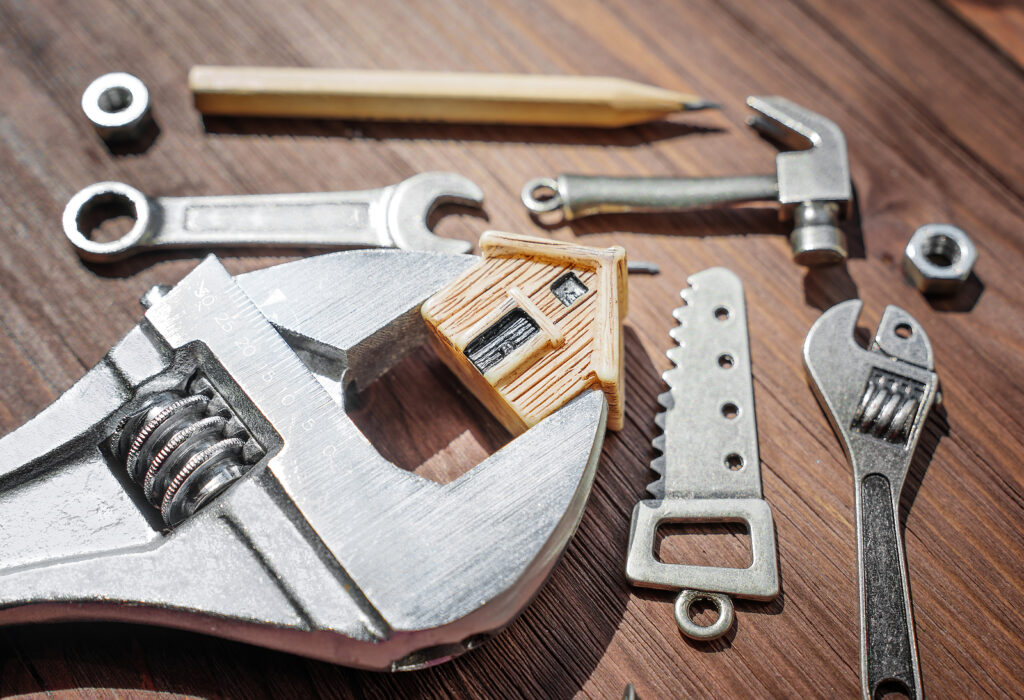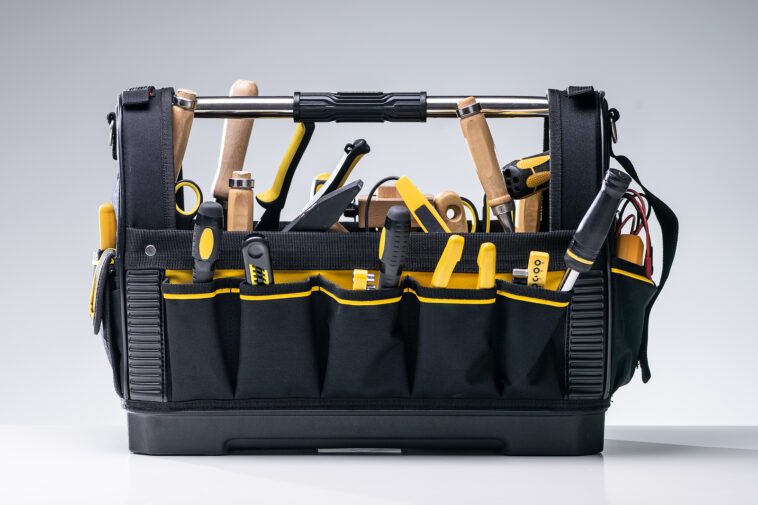DIY Tools
When it comes to tackling my DIY projects, I've learned that having the right set of tools is an absolute game-changer. Whether I'm a seasoned home repair enthusiast or embarking on my very first project, having the essential DIY tools at my disposal is a must. In this comprehensive guide, I want to share with you the tools I've found indispensable for my own DIY adventures.
These tools have been my trusted companions, helping me transform ideas into reality, and I believe they can do the same for you. So, let's dive into the world of DIY and explore the equipment every home handyman should have in their toolbox.
What is DIY
DIY, an acronym for “Do It Yourself,” represents a multifaceted approach to building, creating, or fixing items without the direct involvement of trained experts or professionals. The heart of the DIY philosophy is the belief that individuals possess the capacity to undertake a diverse range of tasks, spanning from home improvement endeavors to intricate crafting projects, independently, without the need for costly specialized assistance.
Motivations for Engaging in DIY Activities
- Cost Savings: One of the most compelling reasons to embrace DIY is the potential for substantial cost savings. By taking matters into their own hands, individuals can sidestep the expenses associated with hiring professionals, which can be particularly appealing for budget-conscious individuals or those facing financial constraints.
- Personal Satisfaction: The sense of accomplishment derived from successfully completing a DIY project is a significant motivator. The satisfaction of witnessing a tangible outcome, brought to fruition through one's own effort and ingenuity, can be immensely gratifying.
- Customization: DIY affords individuals the opportunity to customize projects according to their unique preferences, requirements, and tastes. This level of personalization can be challenging to achieve when relying on external experts who may not fully understand the nuances of an individual's vision.
- Learning: Engaging in DIY endeavors serves as an excellent platform for acquiring new skills and knowledge. It presents a hands-on learning experience that can broaden one's expertise and confidence in various domains, from carpentry and electrical work to artistic and creative pursuits.
- Recreation: For many, DIY activities transcend mere necessity; they are a source of recreation and leisure. The process of planning, executing, and perfecting a DIY project can be a fulfilling and enjoyable pastime, fostering a sense of relaxation and accomplishment.

The Importance of DIY Tools
For avid DIY practitioners, the significance of having the appropriate tools transcends mere convenience—it embodies empowerment and plays a pivotal role in the success of their projects. Here, we delve deeper into why DIY tools are not only valuable but often indispensable:
Enhanced Efficiency & Precision
The selection of the right tools can substantially elevate the efficiency and precision of DIY tasks. Whether you're crafting a piece of furniture, tackling a home renovation, or engaging in a creative project, having access to the appropriate tools streamlines the process. This translates to tasks being completed in less time and with a higher degree of accuracy, ultimately resulting in a more polished and professional outcome.
Prioritizing Safety
Safety is a paramount concern when undertaking DIY projects, and the role of proper tools in mitigating risks cannot be overstated. Tools designed for specific tasks not only make the work easier but also significantly reduce the chances of accidents and injuries. From ergonomic designs to safety features, these tools are engineered to protect users and promote secure working conditions.
Long-term Cost-Efficiency
While initially acquiring quality DIY tools may require an investment, it often proves to be a cost-effective decision in the long run. Durable tools can withstand the rigors of repeated use and challenging projects, eliminating the need for frequent replacements. This stands in stark contrast to relying solely on professionals, whose services can be costly or using subpar tools that wear out quickly, necessitating continuous replacements and resulting in higher cumulative expenses.
Versatility & Adaptability
DIY tools come in a vast array of options, catering to a wide range of tasks and projects. Their versatility allows DIY enthusiasts to tackle various endeavors, from woodworking and plumbing to electrical work and automotive repairs. The adaptability of these tools empowers individuals to explore new domains and expand their skill set.
Personal Empowerment
Beyond their practical benefits, DIY tools offer a sense of personal empowerment. They enable individuals to take control of their projects, fostering a deeper connection to the work and instilling a sense of accomplishment. DIY enthusiasts often relish the opportunity to learn, experiment, and push their creative boundaries, all made possible through the tools at their disposal.
The Essential DIY Tool List
Whether you're embarking on home improvement projects, tackling repairs, or delving into creative craftsmanship, a well-equipped DIY toolbox is essential. Here's an expansive list of must-have DIY tools that every home handyman or handywoman should have at their disposal:
- Tape Measure: This trusty tool is the foundation of precision in DIY work, enabling you to take accurate measurements for cuts, alignments, and fittings.
- Hammer: A quintessential tool in any DIY arsenal, the hammer serves dual purposes—it's perfect for driving in nails with precision and can also be used for breaking down or apart stubborn materials when needed.
- Screwdrivers (Flathead & Phillips): These versatile tools are indispensable for a wide range of tasks involving screws. The flathead is ideal for slot-headed screws, while the Phillips screwdriver is designed for cross-headed screws.
- Pliers (Needle Nose & Regular): Pliers are invaluable for gripping, bending, or cutting wires and other materials. Needle nose pliers are excellent for intricate work, while regular pliers offer a strong grip for heavier tasks.
- Utility Knife: A utility knife is a versatile cutting instrument, perfect for slicing through materials like cardboard, plastic, and lightweight wood with precision and ease.
- Level: Ensuring that your projects are perfectly horizontal or vertical is crucial for professional results. A level is essential for achieving this accuracy in your work.
- Adjustable Wrench: This versatile tool is designed for tightening and loosening nuts and bolts of various sizes. Its adjustable jaw ensures it can handle a range of fasteners.
- Drill (with a Set of Drill Bits): A power drill is a DIY workhorse, essential for making holes in various materials, such as wood, metal, or concrete, and for driving screws effortlessly. A set of drill bits provides versatility for different tasks.
- Handsaw: For manual cutting of wood and other materials, a handsaw is a must-have. It allows for controlled, precise cuts and is ideal for projects where power tools may not be suitable.
- Safety Gear (Safety Glasses, Gloves, Ear Protection): Prioritizing personal safety during DIY tasks is paramount. Safety glasses protect your eyes from flying debris, gloves shield your hands from sharp objects and materials, and ear protection guards against excessive noise exposure during noisy tasks like drilling.

Specialty DIY Tools for Advanced Projects
As DIY enthusiasts progress in their craft and take on more intricate and ambitious undertakings, a new realm of specialized tools becomes indispensable. These advanced tools cater to specific project needs, ensuring precision and efficiency. Here's a comprehensive look at some of these specialized tools that elevate DIY projects to the next level:
Power Sander
When it comes to achieving smooth and polished surfaces quickly, a power sander is an invaluable asset. Whether you're refinishing furniture, preparing surfaces for painting, or working with wood, a power sander ensures an even and professional finish.
Stud Finder
Hanging heavy items securely on walls requires knowledge of the wall's structural framework. A stud finder is a vital tool for locating studs behind walls, ensuring that your fixtures and decorations are anchored securely and safely.
Router
Particularly relevant in woodworking, a router is designed for hollowing out areas in hard materials. This versatile tool allows for intricate designs, edge profiles, and precise shaping, making it a favorite among woodworking artisans.
Circular Saw
When precision cuts on large pieces of wood are essential, a circular saw steps in as a powerful and agile tool. It's ideal for projects like framing, deck construction, and sheet material cutting.
Table Saw
A table saw is a stationary tool that stands as the cornerstone of woodworking precision. It is employed for making straight, consistent cuts on various wood types and dimensions, ensuring unparalleled accuracy in woodworking projects.
Welding Equipment
Venturing into the world of metalwork necessitates welding equipment. Whether it's joining metal pieces for structural projects, crafting metal artwork, or repairing metal fixtures, welding equipment opens up a world of possibilities in the realm of DIY.
Maintaining and Storing Your DIY Tools
Now that you've amassed a diverse collection of DIY tools, it's crucial to understand how to care for and store them properly. Proper maintenance and storage practices not only extend the lifespan of your tools but also ensure that they remain effective and reliable throughout your DIY endeavors. Here's a comprehensive guide to keeping your tools in optimal condition:
Cleaning
After every use, take a moment to clean your tools thoroughly. Use a damp cloth to wipe away dirt, dust, and any residues that may have accumulated during your project. This simple routine maintenance not only keeps your tools looking presentable but also prevents the buildup of grime that can affect their performance over time.
Sharpening
Tools with cutting edges, such as knives, saws, and chisels, benefit from regular sharpening. Dull tools not only hinder your progress but can also be unsafe. Invest in sharpening stones or honing guides to maintain sharp edges. Regular sharpening ensures clean, precise cuts and extends the life of your cutting tools.
Rust Prevention
To protect your tools from rust, store them in a dry, moisture-free environment. If your tools have metal components, consider applying a thin coat of oil to the exposed surfaces. This acts as a protective barrier against moisture, reducing the risk of rust formation. For extra protection, use rust-inhibiting products like desiccant packets in your tool storage area.
Organized Storage
An organized workspace not only enhances efficiency but also minimizes the chances of accidents. Invest in storage solutions such as toolboxes, pegboards, wall racks, or dedicated shelves to keep your tools neatly arranged and easily accessible. Labeling drawers or compartments can further streamline your setup, ensuring that you can quickly locate the tool you need. Storing tools in their designated spots prevents them from getting damaged or lost.
Maintenance Schedules
Establish a regular maintenance schedule for your tools. This includes inspecting them for wear and tear, tightening loose components, and checking for any signs of damage. Address issues promptly to prevent them from escalating and affecting your tools' performance.
Protective Cases
For portable or frequently used tools, consider investing in protective cases. These cases provide an extra layer of protection during transportation and prevent tools from getting damaged while in transit.
FAQs: DIY Tools
Q1: What are the basic tools every DIY enthusiast should have in their toolbox?
A1: Essential DIY tools include a tape measure, hammer, screwdrivers (both flathead and Phillips), pliers (needle nose and regular), utility knife, level, adjustable wrench, drill with a set of drill bits, handsaw, and safety gear (safety glasses, gloves, ear protection).
Q2: What are the specialized tools for advanced DIY projects?
A2: Specialized tools for advanced DIY projects include a power sander, stud finder, router, circular saw, table saw, and welding equipment, depending on the type of projects you're undertaking.
Q3: How can I maintain and prolong the lifespan of my DIY tools?
A3: To maintain your tools, clean them after each use, sharpen cutting tools regularly, prevent rust by storing them in a dry place with proper rust prevention measures, keep your workspace organized, establish maintenance schedules, and consider using protective cases for portable tools.
Q4: Why is safety gear important when working on DIY projects?
A4: Safety gear, including safety glasses, gloves, and ear protection, is crucial to protect yourself from potential accidents and injuries while working on DIY projects. It shields your eyes, hands, and ears from various hazards like flying debris, sharp objects, and excessive noise.
Q5: Are there any recommended brands or types of DIY tools for beginners?
A5: For beginners, it's advisable to start with well-known and reputable brands that offer quality and durability. Some popular brands for DIY tools include Bosch, DeWalt, Stanley, Craftsman, and Black & Decker. Consider purchasing toolsets designed for beginners, which often include a variety of essential tools in one package.
Q6: What should I consider when purchasing DIY tools for the first time?
A6: When buying DIY tools for the first time, consider factors such as your specific project needs, budget, and the quality and reputation of the brand. It's essential to invest in tools that align with the types of projects you plan to tackle and that offer good value for your budget.
Q7: Are corded or cordless power tools better for DIY projects?
A7: The choice between corded and cordless power tools depends on your project requirements. Corded tools typically offer continuous power and are suitable for heavy-duty tasks, while cordless tools provide portability and are ideal for projects where mobility is essential. Many DIY enthusiasts have a mix of both in their toolkits to cover various needs.
Q8: How can I safely use power tools in my DIY projects?
A8: Safety is paramount when using power tools. Always read the manufacturer's instructions, wear appropriate safety gear, keep your workspace well-lit and organized, ensure the tool is in good working condition, and follow proper operating procedures. Additionally, disconnect power sources when changing accessories or making adjustments to the tool.
Q9: What are some common DIY projects that require welding equipment?
A9: Welding equipment is commonly used in DIY projects involving metalwork, such as creating metal art, repairing metal fences, gates, and furniture, or even building custom metal structures. It's essential to have proper training and safety knowledge when using welding equipment.
Q10: Can I rent DIY tools instead of purchasing them for one-time projects?
A10: Yes, many hardware stores and rental shops offer tool rental services, which can be cost-effective for one-time or occasional projects. Renting tools can save you money and storage space, especially for specialized or large tools that you may not need frequently.
Conclusion
In my DIY journey, I've come to appreciate not only the joy of crafting and building but also the incredible importance of having the right tools by my side. These tools are more than just instruments; they are my trusted companions, helping me turn dreams into tangible creations. Whether I'm embarking on a simple home repair or tackling a complex woodworking project, my toolbox is my gateway to empowerment and endless possibilities.
What DIY has taught me is that this hands-on approach to creativity isn't just about saving money—it's about self-sufficiency, personal growth, and the unparalleled satisfaction of seeing your ideas come to life. It's a journey of learning and honing new skills, of crafting not just objects, but also a sense of pride and accomplishment. And at the heart of it all are the tools—each one carefully selected, maintained, and cherished.
So, whether you're a seasoned DIY enthusiast or just starting on this fulfilling path, remember that your tools are more than pieces of metal and plastic; they're your partners in the art of creation. Take good care of them, and they'll take you on a remarkable journey of self-discovery and achievement. Here's to many more DIY adventures and the incredible creations that await!
Sources
https://www.osha.gov/sites/default/files/publications/osha3080.pdf
https://www.osha.gov/hand-power-tools/hazards-solutions




